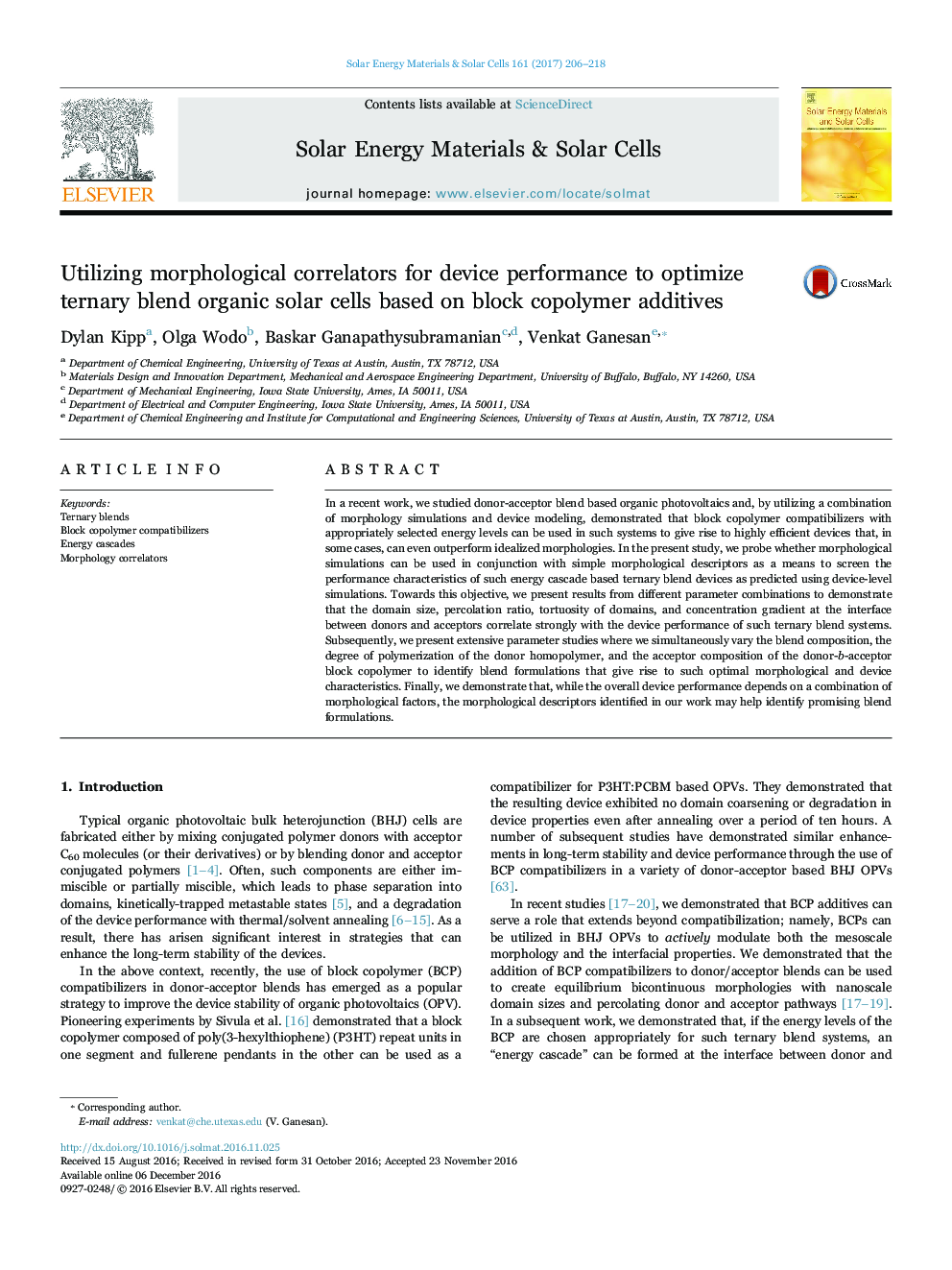| Article ID | Journal | Published Year | Pages | File Type |
|---|---|---|---|---|
| 6457008 | Solar Energy Materials and Solar Cells | 2017 | 13 Pages |
•Recently, the use of block copolymer (BCP) compatibilizers in donor-acceptor blends has emerged as a popular strategy to improve the device stability of organic photovoltaics (OPV). In recent studies, we demonstrated that BCP additives can serve a role that extends beyond compatibilization; namely, BCPs can be utilized in BHJ OPVs to actively modulate both the mesoscale morphology and the interfacial properties.•In a subsequent work, we demonstrated that, if the energy levels of the BCP are chosen appropriately for such ternary blend systems, an “energy cascade” can be formed at the interface between donor and acceptor domains. Such cascaded heterojunctions can be tuned to stabilize charges away from the interface thereby reducing charge recombination and improving the device efficiency. The resulting device performance of such ternary blends reflect the combined influence of morphology and energy cascades, and, in some instances, can be made to outperform even idealized columnar morphologies proposed for bulk heterojunction devices.•In the present study, we probe whether morphological simulations can be used in conjunction with simple morphological descriptors as a means to screen the performance characteristics of energy cascade based donor-acceptor-block copolymer ternary blend devices as predicted using device-level simulations. Towards this objective, we present results from different parameter combinations to demonstrate that the domain size, percolation ratio, tortuosity of domains, and concentration gradient at the interface between donors and acceptors correlate strongly with the device performance of such ternary blend systems.•Subsequently, we present extensive parameter studies where we simultaneously vary the blend composition, the degree of polymerization of the donor homopolymer, and the acceptor composition of the donor-acceptor block copolymer to identify blend formulations that give rise to such optimal morphological and device characteristics.•Finally, we demonstrate that, while the overall device performance depends on a combination of morphological factors, the morphological descriptors identified in our work may help identify promising blend formulations for the fabrication of ternary blend organic photovoltaic devices.
In a recent work, we studied donor-acceptor blend based organic photovoltaics and, by utilizing a combination of morphology simulations and device modeling, demonstrated that block copolymer compatibilizers with appropriately selected energy levels can be used in such systems to give rise to highly efficient devices that, in some cases, can even outperform idealized morphologies. In the present study, we probe whether morphological simulations can be used in conjunction with simple morphological descriptors as a means to screen the performance characteristics of such energy cascade based ternary blend devices as predicted using device-level simulations. Towards this objective, we present results from different parameter combinations to demonstrate that the domain size, percolation ratio, tortuosity of domains, and concentration gradient at the interface between donors and acceptors correlate strongly with the device performance of such ternary blend systems. Subsequently, we present extensive parameter studies where we simultaneously vary the blend composition, the degree of polymerization of the donor homopolymer, and the acceptor composition of the donor-b-acceptor block copolymer to identify blend formulations that give rise to such optimal morphological and device characteristics. Finally, we demonstrate that, while the overall device performance depends on a combination of morphological factors, the morphological descriptors identified in our work may help identify promising blend formulations.
